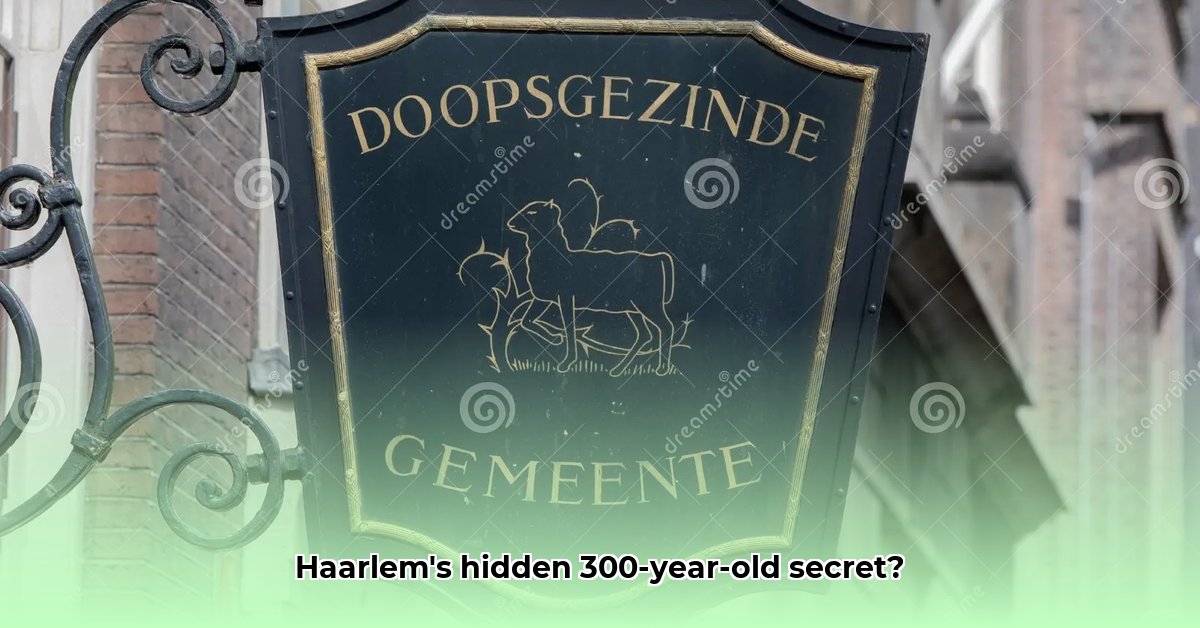
The Doopsgezinde Kerk (Mennonite Church) in Haarlem isn't merely a building; it's a living tapestry woven from centuries of faith, resilience, and surprising cultural influence. Nestled amidst Haarlem's charming streets, this church stands as a testament to a community that, against the odds, thrived and shaped the city's identity. This article will trace its journey, from humble beginnings to its present-day significance.
Humble Beginnings: A Seed of Faith in Haarlem
Imagine Haarlem in the 17th century—a city buzzing with religious tension. Amidst the established churches, a small band of Doopsgezinden (Mennonites) quietly began meeting. Their early gatherings were likely held in modest homes, reflecting their simple faith and emphasis on community. These pioneers faced prejudice and hostility; being a minority faith in a deeply religious society presented countless challenges. Yet, their unwavering belief formed the bedrock of their future success. Their perseverance, a testament to their faith, laid the foundation for their enduring legacy.
Growth and Expansion: A Quiet Revolution
As the decades passed, the Doopsgezinde community flourished. Growing numbers and increasing economic success led to the need for larger meeting spaces. Each acquisition of neighbouring properties wasn’t simply about expanding physical space; it signified a symbolic step towards greater acceptance within Haarlem. The community's commitment to helping their neighbours, such as the transformation of Huis ter Kleef into an orphanage, exemplifies this outward-looking spirit. It underscores the growing influence of the Doopsgezinde beyond their religious practices.
Key Figures: Shaping Haarlem's Soul
Pieter Teyler van der Hulst stands out amongst the Doopsgezinde community. More than just a member, he was a catalyst for significant growth. His influence extended far beyond the church itself. He was instrumental in shaping the church's architecture and, more importantly, in founding the renowned Teyler Museum, a centre of intellectual and artistic life in Haarlem. His legacy demonstrates the profound, multifaceted impact of the Doopsgezinde community on the city's cultural landscape.
Hymnody and Cultural Legacy: A Harmonious Influence
The publication of Christelijke Gezangen en Liederen (Christian Hymns and Songs) in 1804 was a landmark achievement. This collection of hymns, born from the heart of the Doopsgezinde community, profoundly shaped Dutch hymnody. Furthermore, Aagje Deken, a prominent Dutch writer, further enriched the church's cultural legacy, highlighting the interwoven nature of faith and the arts. This contribution resonated far beyond Haarlem's borders, influencing the broader cultural landscape of the Netherlands. Isn't it remarkable how a small community could leave such a sizeable mark on its nation's culture?
Architectural Echoes: A Story Etched in Stone
The church building itself speaks volumes. Its architecture reflects the community's journey. Initially, its design may have been modest, a quiet reflection of their position as a smaller group. However, as their acceptance increased, architectural changes, such as more prominent entrances, reflect the growing confidence and stature of the Doopsgezinde within Haarlem. The building's evolution is a physical manifestation of their broader societal journey.
Present-Day Relevance: An Enduring Legacy
Today, the Doopsgezinde Kerk remains an integral part of Haarlem's identity. Its enduring connection to the Teyler Museum is a tangible representation of its lasting influence. The church's continued presence speaks volumes about faith, community spirit and cultural enrichment. More than just a place of worship, it's a living monument to the extraordinary impact of an ordinary community that persevered against the odds. The Doopsgezinde Kerk stands as a vibrant symbol of a community’s enduring spirit and the power of faith in shaping a city’s identity. Isn’t this a true testament to the lasting power of community and belief?
Key Events:
- 17th Century: Establishment of the first Doopsgezinde meeting place in Haarlem.
- 18th Century: Acquisition of neighboring properties, reflecting the community's growth.
- Late 18th/Early 19th Centuries: Pieter Teyler van der Hulst's contributions significantly impact both the church and Haarlem's cultural life.
- 1804: Publication of Christelijke Gezangen en Liederen, shaping Dutch hymnody.
- Present Day: The Doopsgezinde Kerk remains a vibrant part of Haarlem's cultural heritage.